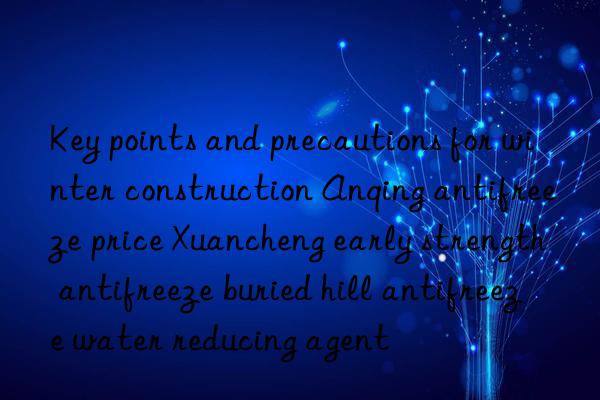
(1) For cement used in winter construction, early-strength Portland cement should be preferred, and the critical freezing strength of concrete should be strictly controlled. Its critical freezing strength should not be lower than the specification requirements. , before the concrete temperature drops to 0℃, its compressive strength shall not be lower than the critical frost resistance strength. The critical strength of concrete prepared with Portland or ordinary Portland cement should not be less than 30% of the design strength standard value. The strength grade of column concrete is 30MPa, and the critical strength should not be less than 9MPa.
(2) The mixing water shall not contain ions that will cause the cement to solidify and harden normally and cause corrosion of steel bars and concrete. Tap water or clean natural water should be used; the concrete delivery pipe should be connected, and the feed inlet should be located in a sheltered place. Except for one side of the feed inlet, windshields are set up on the other three sides and wrapped in woven bags. After the concrete tank truck enters the site, the quality inspector will check whether the slump meets the requirements and measure the temperature of the concrete to ensure that the exit temperature is not lower than 10°C. After pouring, it is covered with insulation in time, and the mold entry temperature is required to be not lower than 8°C. (3) For the maintenance and insulation of concrete, after the beam and slab concrete is poured and the secondary plastering is completed, a layer of plastic film should be laid in a timely manner and then a double layer of flame-retardant quilt should be laid. After the columns and walls are removed from the formwork, If the difference between the temperature of the concrete and the ambient temperature is greater than 20°C, it should be wrapped first with plastic film and then with 5cm thick flame-retardant tape for curing.
<img src="/upfile/202210/2022101830586343.jpg"/




 微信扫一扫打赏
微信扫一扫打赏
